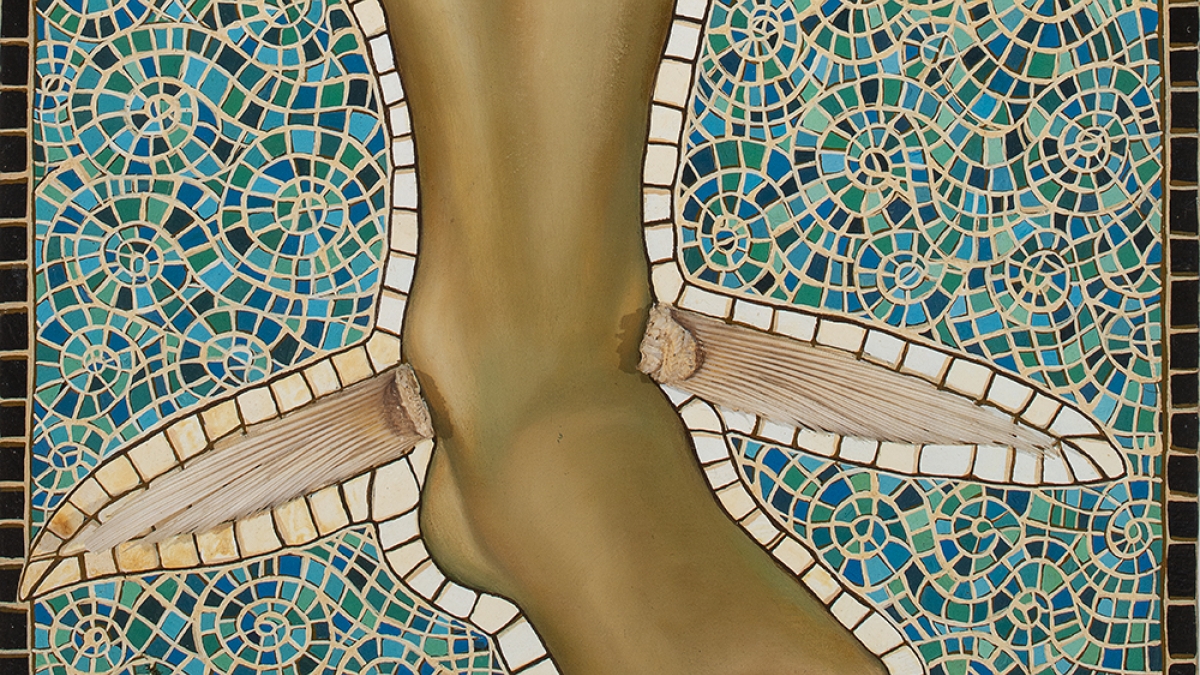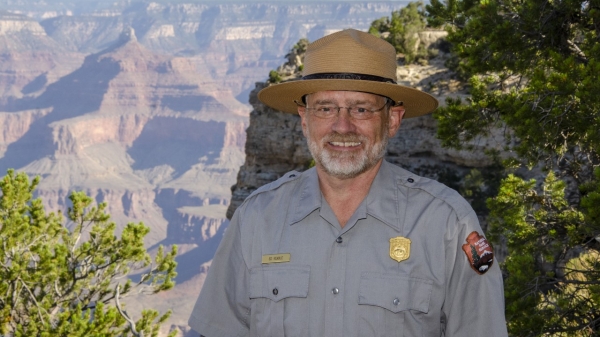ASU, Phoenix art museums showcase Cuban art

Jacqueline Brito Jorge, Adaptaciones (pies), 1996. Acrylic on canvas with shells and fish fins. Collection of ASU Art Museum. Gift of the artist. Photo by Craig Smith
Phoenix Art Museum and Arizona State University Art Museum will co-present “Lo que es, es lo que ha sido/What It Is, Is What Has Been: Selections from ASU Art Museum's Cuban Art Collection” this spring.
This is the first major curatorial collaboration between the two institutions in over a decade. The exhibition at Phoenix Art Museum navigates the expressivity of human experience in times of crises and upheaval.
“Lo que es, es lo que ha sido/ What It Is, Is What Has Been" is curated by Olga Viso, curator-at-large at PhxArt and senior advisor at ASU's Herberger Institute for Design and the Arts, and Julio César Morales, executive director and co-chief curator of Museum of Contemporary Art in Tucson.
The ASU Art Museum's Cuban contemporary art collection was launched by Marilyn A. Zeitlin in 1998 and focused on artists from the late 1980s to the mid-2000s. Zeitlin was appointed director and chief curator in 1992. She led the ASU Art Museum over a period of 15 years.
As a curator of contemporary art, Zeitlin committed to supporting Latino and Latin American artists and experimental art forms like video art, installations and new media. During that same year, eight museums across the country hosted the groundbreaking exhibition "Contemporary Art from Cuba: Irony and Survival on the Utopian Island."
The new exhibition draws from the contemporary Cuban art collection at the ASU Art Museum to provide deeper context to PhxArt’s simultaneous presentation of the special-engagement exhibition "Juan Francisco Elso: Por América," the first retrospective in more than 30 years of the late Cuban artist and a project organized by El Museo del Barrio in New York City, according to a press release from PhxArt.
The museums will also co-partner to present community programs designed to engage visitors with these dynamic artworks and bring greater visibility to the complex histories of migration in Cuba and Mexico.
“ASU Art Museum has a 25-year history of highlighting the work, voices and perspectives of Cuban artists,” said Miki Garcia, director of the ASU Art Museum. “Our partnership with Phoenix Art Museum is a great opportunity to deepen our connection with the community.
"The artists in these exhibitions demonstrate how Cuban artists created a new visual culture — one that challenged the Soviet-era preference for art imbued with a political agenda and censorship. Cuban artists of the ’80s and ’90s experimented with both the materials they used and the messages they crafted. We see a mixture of conceptual art, folkloric themes and institutional critiques that simultaneously shaped the new culture and served as a space to process the impact Communist ideologies had on artists’ sense of personal and communal identity.”
“Through this collaboration with the ASU Art Museum, Phoenix Art Museum has the opportunity to bring works by Cuban artists from ASU’s incredible collection to our galleries while partnering on a series of public programs to better understand the complexity of issues surrounding exile faced by Cuban artists,” said Jeremy Mikolajczak, the Sybil Harrington Director and CEO of Phoenix Art Museum. “These exhibitions present a distinctive look at the impact of a singular artist and his place in art history, as well as how the Phoenix community has embraced and supported artists whose voices and artistic practices have been challenged by political establishments.”
As part of both museums' efforts to showcase Cuban art, ASU Art Museum will display the “Cuba Print Portfolio,'' which consists of 11 prints, including work that reflects various views of the revolution and the realities of life in Cuba under the United States' embargo.
Also on display from May 8 to July 31 will be “Methuselah,” a digital artwork that virtually reproduces the 6,000-mile transnational migratory journey of a single monarch butterfly. These are in conjunction with the exhibitions “Lo que es, es lo que ha sido/What It Is, Is What Has Been” and “Migrations Stories: Arizona Collects Cuban Art,” both at Phoenix Art Museum.
Also, the exhibition “Juan Francisco Elso: Por América” at Phoenix Art Museum investigates the brief yet significant career of the late Juan Francisco Elso, a member of the first generation of artists born and raised in post-revolutionary Cuba.
“Lo que es, es lo que ha sido/What It Is, Is What Has Been: Selections from the ASU Art Museum’s Cuban Art Collection” is made possible through the generosity of the museum’s Circles of Support and museum members.
Admission is free for ASU students. Entrance into the exhibition is included in general admission for the public. For a full breakdown of general-admission prices and hours, visit phxart.org.
Exhibitions and events
Phoenix Art Museum, Steele Gallery
1–2:30 p.m., May 6
Phoenix Art Museum, Singer Hall
Installation: "Methuselah" by Reynier Leyva Novo
May 8–July 31
ASU Art Museum
5–5:45 p.m., June 21
Phoenix Art Museum, Steele Gallery
More Arts, humanities and education

Grand Canyon National Park superintendent visits ASU, shares about efforts to welcome Indigenous voices back into the park
There are 11 tribes who have historic connections to the land and resources in the Grand Canyon National Park. Sadly, when the…
ASU film professor part of 'Cyberpunk' exhibit at Academy Museum in LA
Arizona State University filmmaker Alex Rivera sees cyberpunk as a perfect vehicle to represent the Latino experience.Cyberpunk…

Honoring innovative practices, impact in the field of American Indian studies
American Indian Studies at Arizona State University will host a panel event to celebrate the release of “From the Skin,” a…